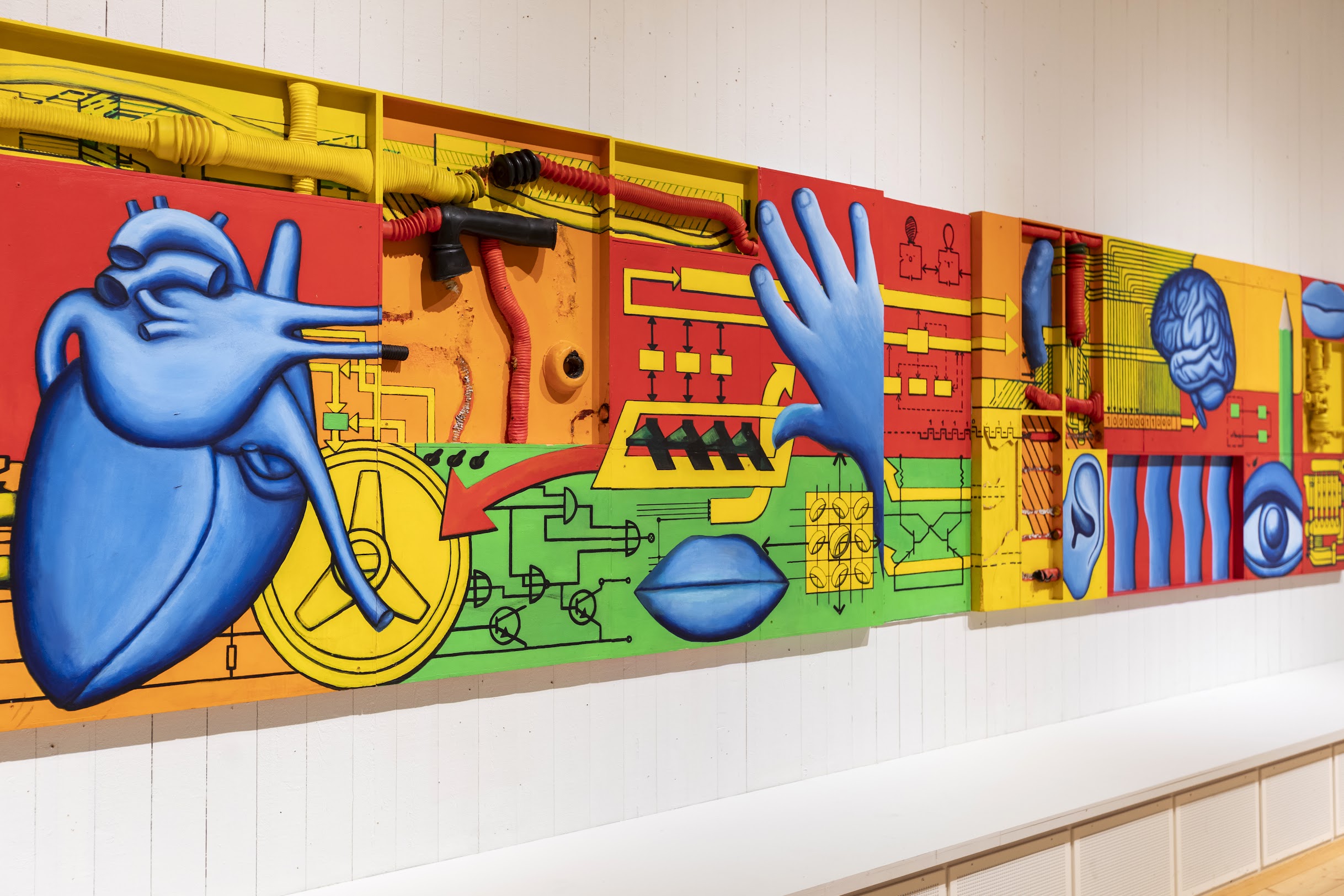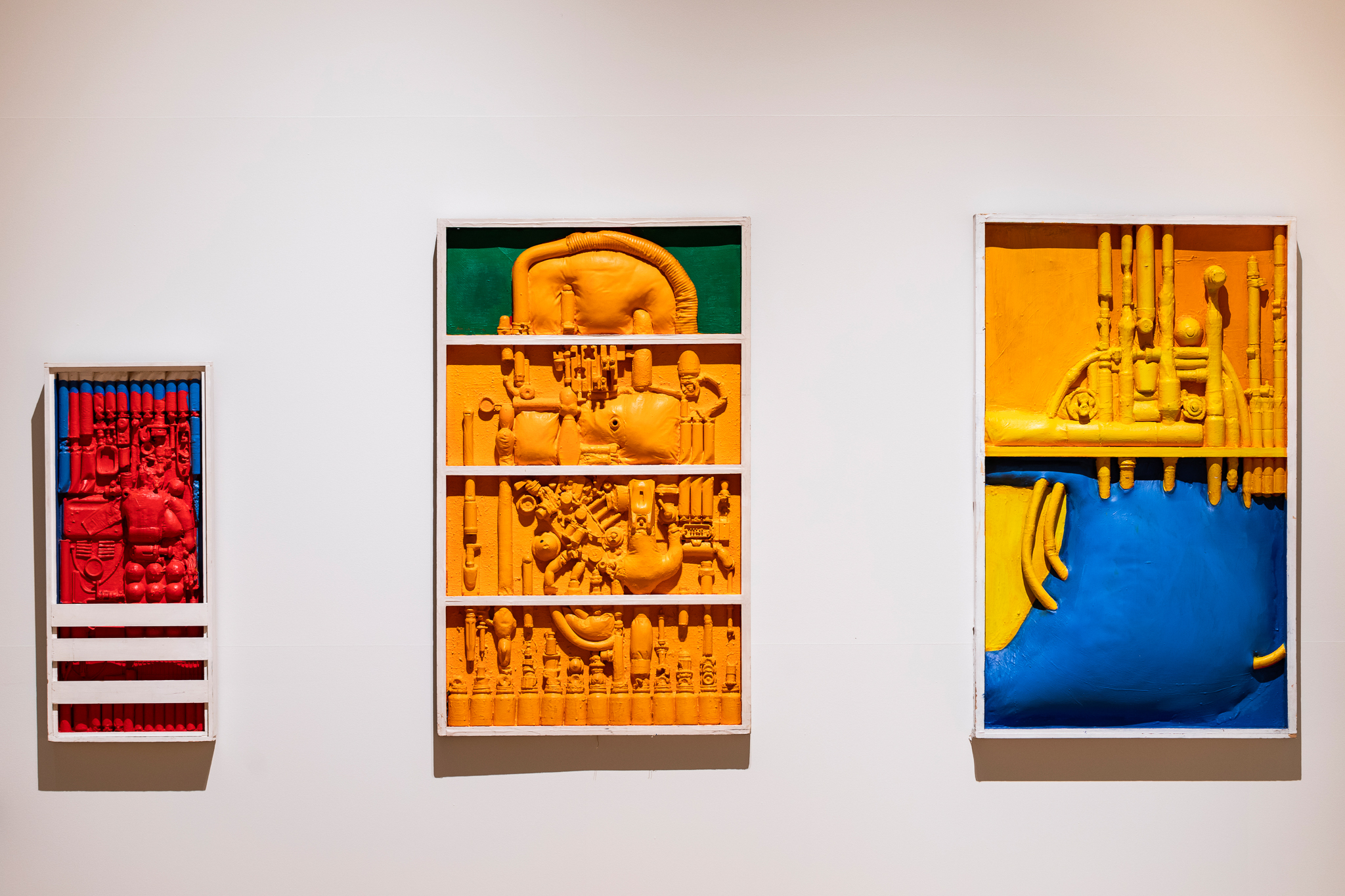Atti Johansson (1917–2003) grew up in Kiruna but spent most of her life in Sollefteå in the north of Sweden. Her life and artistic practice were deeply influenced by the pressing issues of her time: emerging computer technology, environmental destruction, nuclear power, the peace movement, and women’s liberation. In light of the escalating climate crisis and the digital revolution of the present day, Atti's art is more relevant than ever.
Between 1954 and 1958, she divided her time between family life in Sollefteå and the Royal Danish Academy of Fine Arts in Copenhagen, where she studied Fine Art. Inspired by the rock carvings in Nämforsen, Atti later travelled to France to study cave paintings, in search of a primal form of image-making.
“Atti Johansson - Mekanisk/Organisk” (“Mechanical/Organic”) presents 35 years of Atti's artistic practice, focusing on the questions that she was most passionate about: technology, the forest, and the vulnerability of human bodies.
The exhibition takes its name from a series of assemblages called “Mekanisk/Organisk”, which served as the foundation for several public works, including a ten-metre-long wall installation titled “Vårt medvetande ligger långt efter teknikens framsteg” (Our Consciousness Is Far Behind Technological Progress). After almost 50 years in a school environment in Sollefteå, it has been carefully restored by the museum's conservators to ensure its preservation for the future.
"Atti Johansson was a trailblazer in social debate on many levels. As early as the 1960s and 70s, she was addressing questions about the differences between human and artificial intelligence and how these different systems and capabilities are valued in relation to economic profitability. Friends and family describe Atti as an extraordinarily well-read and intelligent woman with the whole world as her playground. In everything she did, she commented on and examined contemporary society thoroughly and with great integrity. She studied new computer technology in detail, interviewed engineers at IBM in Stockholm and Copenhagen, and learned to interpret technical drawings and punch cards. Later, when she became deeply engaged with environmental issues, particularly focusing on forestry, she made it her mission to learn everything she could about Hormoslyr, dioxins, and alternative methods for sustainable forestry," explains the exhibition's curator, Karolina Aastrup.
Installation images by Jessica Arneback/Västernorrlands museum.
Between 1954 and 1958, she divided her time between family life in Sollefteå and the Royal Danish Academy of Fine Arts in Copenhagen, where she studied Fine Art. Inspired by the rock carvings in Nämforsen, Atti later travelled to France to study cave paintings, in search of a primal form of image-making.
“Atti Johansson - Mekanisk/Organisk” (“Mechanical/Organic”) presents 35 years of Atti's artistic practice, focusing on the questions that she was most passionate about: technology, the forest, and the vulnerability of human bodies.
The exhibition takes its name from a series of assemblages called “Mekanisk/Organisk”, which served as the foundation for several public works, including a ten-metre-long wall installation titled “Vårt medvetande ligger långt efter teknikens framsteg” (Our Consciousness Is Far Behind Technological Progress). After almost 50 years in a school environment in Sollefteå, it has been carefully restored by the museum's conservators to ensure its preservation for the future.
"Atti Johansson was a trailblazer in social debate on many levels. As early as the 1960s and 70s, she was addressing questions about the differences between human and artificial intelligence and how these different systems and capabilities are valued in relation to economic profitability. Friends and family describe Atti as an extraordinarily well-read and intelligent woman with the whole world as her playground. In everything she did, she commented on and examined contemporary society thoroughly and with great integrity. She studied new computer technology in detail, interviewed engineers at IBM in Stockholm and Copenhagen, and learned to interpret technical drawings and punch cards. Later, when she became deeply engaged with environmental issues, particularly focusing on forestry, she made it her mission to learn everything she could about Hormoslyr, dioxins, and alternative methods for sustainable forestry," explains the exhibition's curator, Karolina Aastrup.
Installation images by Jessica Arneback/Västernorrlands museum.






